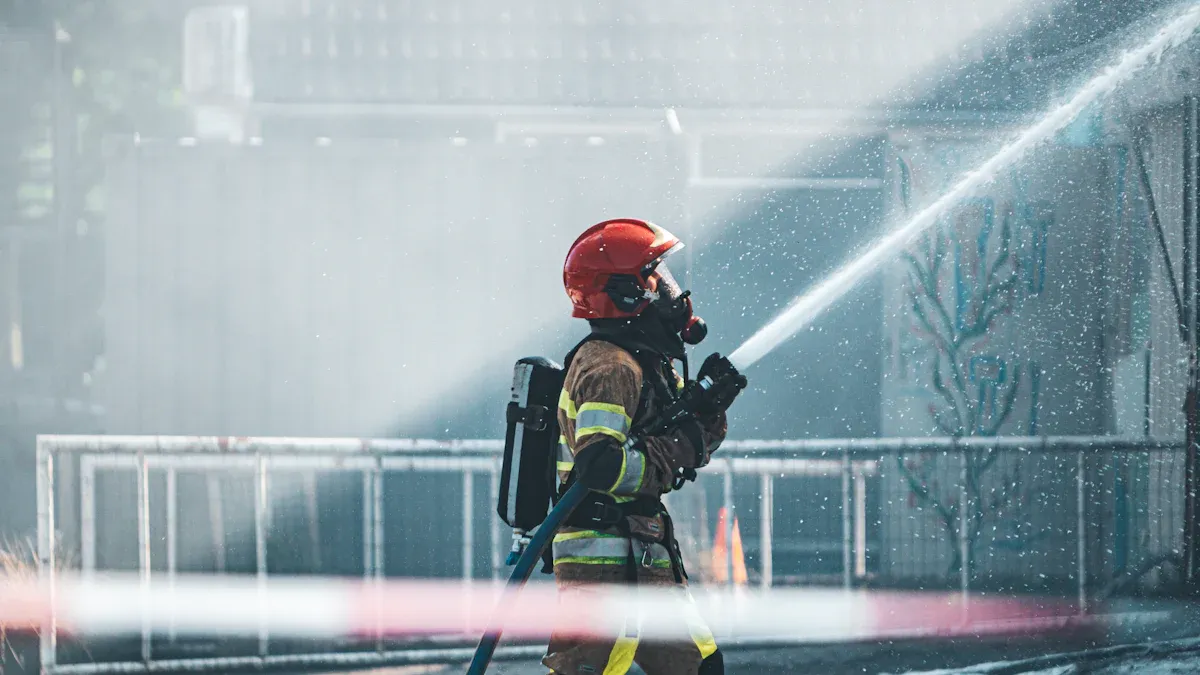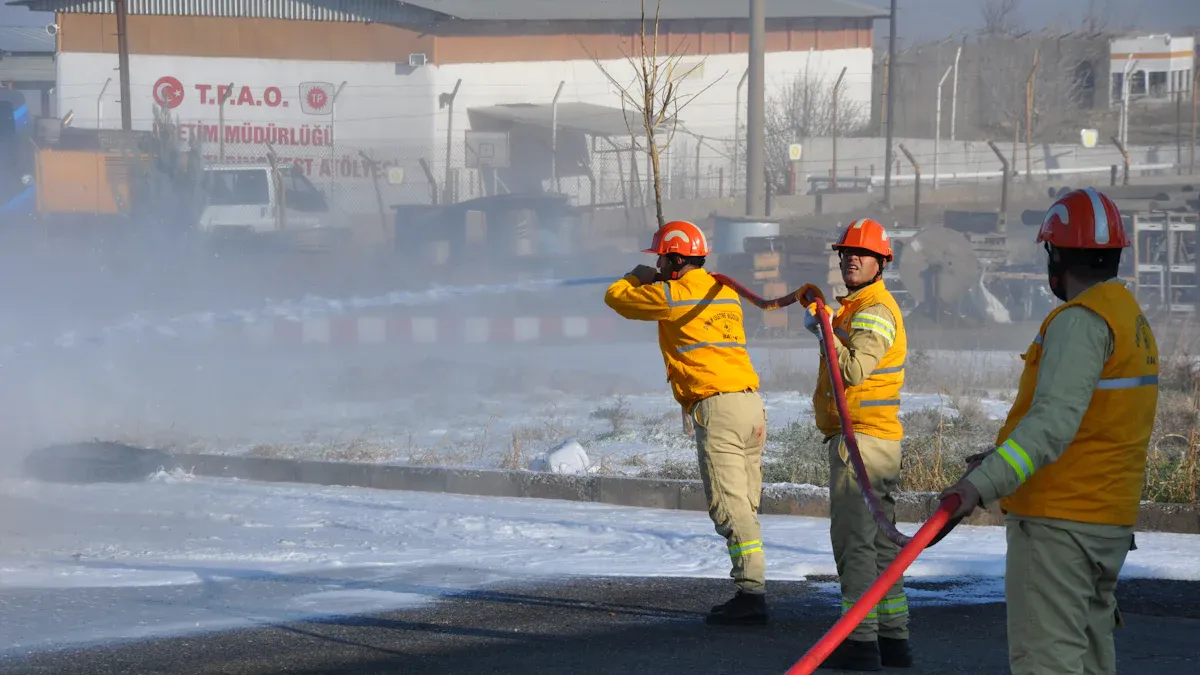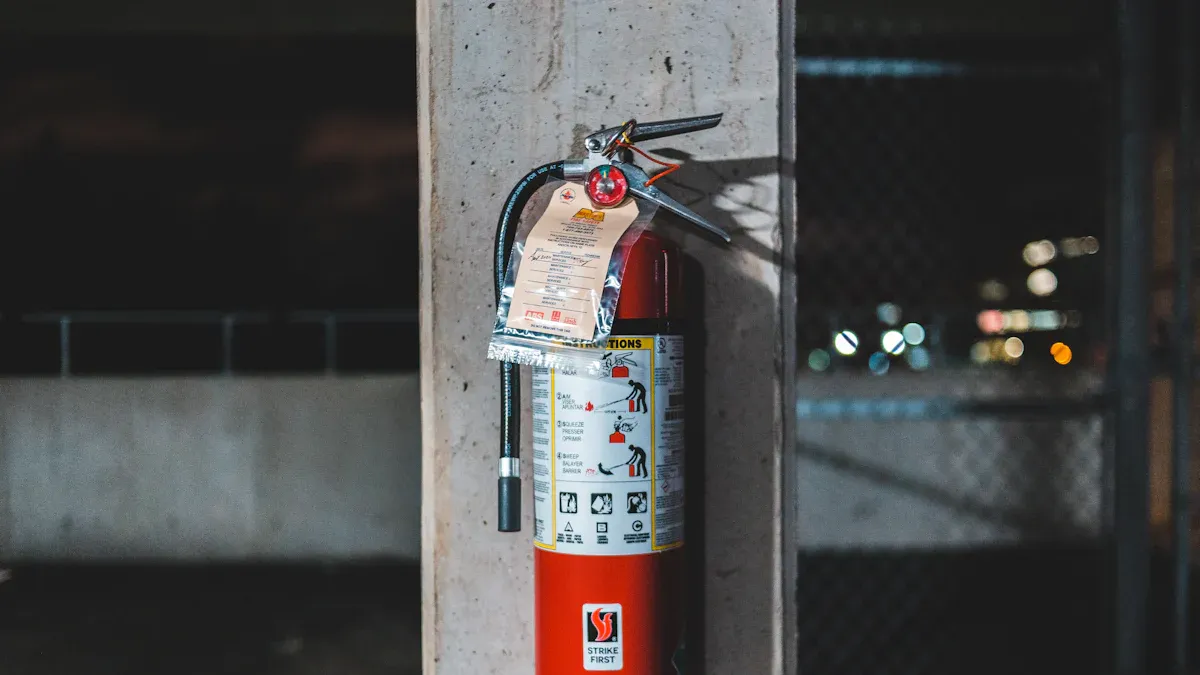
In a busy hospital, Hospital Fire Safety can be a significant concern. Hospitals sometimes overlook fire safety rules, which creates dangers. It is challenging to evacuate patients and staff during fires due to the presence of many flammable items, such as bedding and alcohol-based products. Additionally, management often does not address safety concerns raised by staff. These issues highlight the importance of effective fire safety in hospitals. True safety does not stem from just one product, it arises from collaboration to understand medical needs and providing long-term support.
Key Takeaways
-
Hospitals need clear plans to help patients during fires.
-
Staff should have regular training and practice drills.
-
Technology like mass notification systems helps communication in emergencies.
-
Regular checks of fire safety equipment can prevent fires and keep everyone safe.
-
Working with local fire departments improves fire safety in hospitals.
The Four Critical Challenges of Hospital Fire Safety

Evacuating the Most Vulnerable
Getting patients out during a fire is very hard. This is especially true for those who cannot move easily. Hospitals need to have good plans to keep all patients safe. Here are some steps to follow:
-
Use the manual fire call point or call emergency services if it does not work.
-
Stop giving oxygen to patients in danger and move them to safety.
-
If it is safe, try to put out the fire with a fire extinguisher.
-
Turn off oxygen valves in the area and give oxygen to other patients using tanks.
-
Get patients ready to leave, assign tasks, and plan escape routes.
-
Place patients in safe spots and follow the major incident rules, checking for injuries.
-
Make sure all staff members are safe and accounted for.
These steps show how important it is to have a good fire evacuation plan.
Protecting Critical Life Support Systems
Fires can seriously harm life support systems in hospitals. The table below shows common fire causes and how to prevent them:
|
Cause of Fire |
Preventive Measure |
|---|---|
|
Electrical malfunctions |
Regular checks of electrical equipment |
|
Oxygen-related incidents |
Keeping wiring in good shape and following safety rules |
|
Inadequate emergency training |
Teaching ICU staff how to respond in emergencies |
Fires in intensive care units (ICUs) can create thick smoke and make it hard to see. This makes moving patients harder. Patients who are very sick need oxygen and special medicines, so moving them during a fire is tough.
Enhancing Staff Emergency Preparedness
It is very important for hospital staff to be ready for emergencies. Even though fire safety is crucial, only 65% of healthcare workers get yearly fire safety training, according to the Healthcare Fire Safety Association (HFSA). Hospitals should work on:
-
Creating an Emergency Operations Plan (EOP) that explains roles and steps for different disasters.
-
Regularly updating and practicing the EOP with drills and reviews.
-
Working with outside partners and agencies for better preparedness.
These actions help hospitals respond well during fires and other emergencies.
Managing Complex Infrastructure and Operational Pressure
Hospitals have complicated structures that increase fire risks. Some factors include:
-
Many flammable items and sources of ignition.
-
Lots of people and sensitive medical devices in one place.
-
Complex building designs and busy operations make fire safety harder.
Operational pressures, like needing electrical equipment and kitchen fire risks, can make fire safety management difficult. Hospitals must include fire safety in their daily operations to reduce these risks.
An Integrated Strategy: From Reactive to Proactive

In hospital fire safety, an integrated strategy changes the focus. Instead of just reacting to fires, it aims to stop them before they happen. This plan has three main parts: preventing fires with custom solutions, having quick response methods, and providing ongoing support for improvement.
Prevention: Customization and System Integration
Good fire prevention in hospitals depends on solutions made for specific risks. Hospitals should focus on these important parts:
-
Regular Inspections and Maintenance: Routine checks find fire hazards before they become serious. This means making sure fire extinguishers, smoke detectors, and alarms work well.
-
Staff Training and Awareness: Hospital workers need thorough fire safety training. This training should include how to prevent fires, respond in emergencies, and communicate well during crises. Regular drills help staff know the fire safety plan.
-
Clear Communication and Protocols: Having set procedures helps everyone know what to do during a fire. This includes clear evacuation routes and plans that all staff understand.
Customizing fire safety systems is very important. For example, hospitals can use fire alarm systems that connect alarms, sprinklers, and other emergency systems together. This connection allows for real-time monitoring and faster responses, which helps reduce fire damage.
|
Following fire codes |
|
Buildings designed to resist fire |
|
Regular upkeep of fire protection systems |
|
Doing fire drills to ensure readiness |
Response: High-Efficiency Evacuation and Remote Support
During a fire, hospitals must have quick evacuation plans. Using new technologies can greatly improve response efforts:
-
Mass Notification Systems (MNS): These systems send alerts and instructions during emergencies, helping staff and patients get to safety.
-
IoT Technology: Connecting fire and security systems helps with better data analysis and safety management. Smart sensors give early warnings for fires, allowing for better control.
-
Remote Support: Real-time data from sensors and smart analysis helps firefighters handle tough situations. This includes using special helmets that help see in smoky areas.
These technologies help hospitals carry out safe fire evacuations while keeping patients and staff safe.
Long-Term Support: Continuous Optimization and Upgrades
To keep fire safety measures effective, hospitals must keep improving and upgrading their systems. Best practices include:
-
Regular Inspections and Testing: Fire safety systems need regular checks to stay working and meet safety rules.
-
Staff Training and Drills: Hold regular training and fire drills to prepare staff for emergencies.
-
Updating Safety Protocols: Regularly change evacuation routes and make sure employees know these updates.
-
Collaboration with Authorities: Work with local fire departments for advice and joint drills.
-
Feedback and Incident Analysis: Look at fire incidents to find causes and make improvements.
By following these practices, hospitals can keep their fire safety systems up to code and protect lives effectively.
Smart Solutions in Hospital Scenarios
Operating Rooms and Data Centers
Operating rooms and data centers are very important places in hospitals. They have high fire risks. Flammable items like surgical drapes and alcohol-based sanitizers are present. This means hospitals need special fire systems. Clean agent suppression systems, like FM-200, can put out fires without hurting sensitive equipment. Regular checks for electrical safety are important. These checks help find wiring problems and overheating servers. Following NFPA 75 standards makes sure fire protection is good for IT equipment.
Key fire safety rules for these areas include:
-
Knowing about possible fuel sources and drying prep solutions.
-
Training staff to handle different types of surgical fires well.
Laboratories and Chemical Storage
Laboratories have special fire risks. They contain flammable chemicals, combustible materials, and complex electrical equipment. Heating and open flames can increase fire chances. Hospitals must focus on fire safety in these areas.
To lower risks, hospitals should:
-
Keep materials in special flammable storage cabinets.
-
Keep flammable items away from things that don’t mix.
Using fire suppression systems made for chemical and gas hazards is very important. These systems can handle the unique risks found in labs.
Neonatal and Geriatric Wards
Neonatal and geriatric wards need special care because their patients are vulnerable. Fire safety plans must fit the needs of these groups. Hospitals should use the RACE method—Rescue, Alarm, Contain, and Extinguish/Evacuate—to help with fire emergencies.
Key fire safety steps include:
|
Key Fire Safety Procedures |
Description |
|---|---|
|
RACE |
Steps to take in a fire emergency: Rescue, Alarm, Contain, Extinguish/Evacuate |
|
Evacuation Procedures |
Knowing evacuation plans, escape routes, and meeting points for patients with different needs |
|
Fire Drills |
Taking part in drills to practice emergency steps and learn evacuation routes |
By focusing on these high-risk areas, hospitals can improve fire safety and ensure safe evacuations for all patients.
As this article highlights, true safety doesn’t come from a single product—it comes from collaboration. Tyee is dedicated to working with clients and industry experts to address complex fire safety challenges. While we have deep expertise in hospital fire safety, we have also successfully served many other industries.
To learn more about our customized fire safety solutions, please feel free to contact our team.
FAQ
What are the main causes of fire in hospitals?
Fires in hospitals often happen because of electrical problems, bad storage of flammable items, and cooking tools. Regular checks and maintenance can help stop these fires.
How can hospitals improve fire safety training for staff?
Hospitals should create complete training programs. These programs should include regular practice drills, clear emergency plans, and teamwork with local fire departments to make staff ready.
What role does technology play in hospital fire safety?
Technology helps fire safety in hospitals by using systems that monitor things in real-time, send automatic alerts, and create safe evacuation paths. These systems help hospitals respond quickly during emergencies.
How often should fire safety equipment be inspected in hospitals?
Hospitals should check fire safety equipment at least once a month. Regular maintenance makes sure alarms, extinguishers, and emergency lights work well.
What should hospitals do during a fire emergency?
During a fire emergency, hospitals must turn on alarms, safely evacuate patients, and follow set plans. Staff should stay calm and help patients who need extra care.









